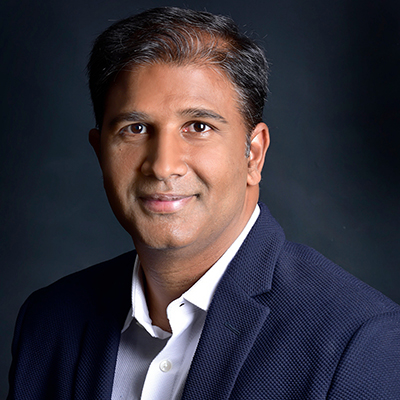Navigating the Modern Recruitment Landscape with New Age Tech: Strategies for Attracting Top-tier Talent | Sekhar Garisa| CEO | foundit, a talent platform
 Recruitment has always been a challenging business. The last few years have been characterised by the economic slowdown and several upheavals — first, the disruption of the pandemic, then the Great Resignation. – As a result, the recruitment landscape has become a labyrinth of threats and opportunities for organisations seeking to fortify their workforce.
Recruitment has always been a challenging business. The last few years have been characterised by the economic slowdown and several upheavals — first, the disruption of the pandemic, then the Great Resignation. – As a result, the recruitment landscape has become a labyrinth of threats and opportunities for organisations seeking to fortify their workforce.
Ever-changing roles, the need for skill-based hiring, and dynamic work models have called for a change in the conventional talent acquisition methods, and advancements in generative AI and similar technologies offer new solutions to these disruptions. The contemporary process was once a traditional job listing followed by a face-to-face interview. This has now transformed into a platform-based, data-driven, strategic recruitment process that helps companies find the right talent fit through informed decision-making. For instance, predictive analytics can help employers anticipate talent shortages or surpluses based on historical data, allowing them to adjust their hiring strategies proactively. Technology has also become instrumental in overcoming geographical barriers, with organisations adopting a geocentric approach to hiring regardless of origin or location.
Nevertheless, today’s astute business leaders and HR strategists face a complex, billion-dollar question:
What is the most efficient way to secure top talent in a rapidly evolving job market?
Crafting a Compelling Employer Brand
Following the job market volatility over the past couple of years, it is clear that most job seekers are looking beyond paychecks and job titles. Their expectations from work have evolved to prioritize culture and flexibility, well-being initiatives, and a larger addressal of career growth.
A company’s story — its values, culture, and opportunities — have truly become the most potent recruitment tool. Remember, just like people buy from people, people also work for people. In the competitive recruitment landscape, teams and hiring managers must make a genuine connection with potential employees, and companies that craft an employer narrative resonating with the aspirations of the modern workforce will attract the cream of the crop. It’s very similar to marketing a premium product — everything else in your recruitment strategy flows from the strength of your brand identity, which should be authentic and people-centric.
Tapping into Passive Candidates
One of the many hurdles faced by recruiters include sourcing quality candidate profiles. Interestingly, various studies indicate that passive candidates — people who aren’t actively seeking a job on job boards— form 70% of the talent pool. Most companies have no visibility into this silent majority. Most likely, they are looking at the 30% of active candidates everyone else is chasing. Casting a wider net that includes candidates off the market can help employers attract the best talent fit.
Going Beyond the Resume, Using Smarter Filters
According to foundit Recruiter survey, more than half of the recruiter ecosystem in India anticipate identifying the right candidate as their most significant challenge. While it may seem good to have 1,000 or 10,000 potential candidates to choose from, it can also be time-consuming and counter-productive. Hence, businesses need to understand the nuanced motivations of top-performing candidates with a more holistic approach that goes beyond just collating the data from resumes.
AI-powered tools and other cutting-edge technologies have made it possible to filter best-fit candidate profiles and personalized profile recommendations with the context of recruiter requirements. They can also highlight relevant insights about candidates and verify their skillsets using Natural Language Processing (NLP) and Knowledge Graph techniques. Most interestingly, AI tech can cull out smart insights that determine whether candidates are a good cultural fit for the organization and align with the company’s values and vision.
Personalising Candidate Engagement using AI
The changing expectations of today’s job seekers include the job search process itself — they expect a personalised recruitment experience. Hence, how companies reach out to a candidate matters. Generative AI-enabled recruitment tools can help mass-personalise messages and campaigns, improving engagement and leading to better outcomes. Whether it is an email, SMS, or phone call, it is key that candidates come away with a positive experience. This is a significant differentiator.
Chatbots and virtual assistants can guide candidates through the application process, assisting them with immediate responses to their queries. It can adjust to their conversation style to create a more natural and engaging experience and also help schedule interviews seamlessly. Moreover, AI-driven video interviews can help evaluate candidates’ soft skills and communication abilities, providing valuable insights to employers.
Improving Efficiency through Collaboration
A unified approach to candidate outreach with seamless collaboration within HR functions is more important than one may think. In most recruitment teams, the communications are ad-hoc and scattered. To ensure seamless communication, employers can invest in the right tools, like a centralised platform that fosters collaboration by storing all communications with candidates, interview notes, and feedback loops, accessible by all members of the HR team.
The Path Forward
As automation and AI continue disrupting industries, the stakes have never been higher in the war for talent. To build enduring teams and gain a competitive edge, business leaders must make recruitment a strategic priority now.
Developing an authentic employer brand that genuinely connects with people inside and outside the organization, equipping recruiters with AI tools for greater reach and efficiency, and focusing on creating an exceptional candidate experience that turns even passive candidates into advocates are key. With the right vision and execution, forward-looking teams can build for the long term, even in these turbulent times.


